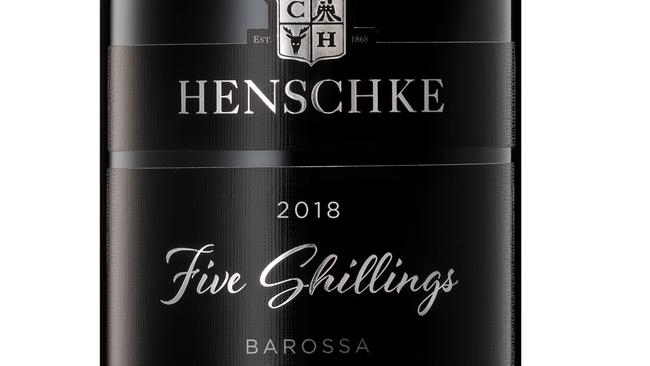Big dry adds to mystique of the soil-grape relationship
The Henschkes have just completed a harvest that can best be described as “slim pickings”.

Long lunches washed in great wine shouldn’t really be described as “sobering”. It suggests you’re doing it wrong.
But lunch last week with Stephen and Prue Henschke was a poignant reminder that winemakers are farmers above all else.
The Henschkes have just completed a harvest that can best be described as slim pickings. In many of the country’s wine regions, 2019 has delivered historically humble yields, in some cases down 80 per cent on what could be expected.
In the Henschkes’ famed Mount Edelstone vineyard, 16ha produced five tonnes of fruit, just enough to fill one of the old stone fermenters in the winery. In most years three or four fermenters are needed.
Reflecting on a challenging season is a chance for the Henschkes to give quiet thanks for the fact they have vineyards better prepared for adversity than most.
The Henschkes are blessed with a collection of vineyards that have been through seasons good, bad and indifferent for more than a century.
The oldest vines on the Hill of Grace vineyard date back to 1860 and Mount Edelstone was planted in 1912. Other wines come from Eden Valley plantings from the 1950s and even the family’s Adelaide Hills vineyards, relative youngsters dating back to the 80s, are among the oldest in the region.
Tasting through the wines from old vineyards like these always poses the question: what makes old vineyards so special? The flippant answer is great old vineyards were once great young vineyards, their inherent quality the key to their preservation. Vineyards that just don’t cut it can’t avoid the pulling tractor.
But there’s more to it than that. The relationship between the plant and the dirt in which it sets roots, like all good relationships, gains complexity and profundity over time.
Prue Henschke is involved in a research project seeking deeper understanding of the nature of old vineyards. So far it’s showing that a lot of the metrics by which grape physiology is measured — pH levels, acidity, ripening times — are roughly similar between the fruit from both old and young vines. But there are discernible textural differences, although these are trickier to quantify. Wines from old vines just feel different in the mouth.
It’s a point proved by the 2014 Hill of Grace, the most prominent of a suite of new Henschke releases due to hit the market on May 1.
Until 2019 rewrote the rules around what constitutes a low-yielding vintage, 2014 was regarded as a mean and miserly season. But the fruit that was harvested was undeniably the product of that special vineyard, a wine unquestionably carrying the signature of that sacred site.
The Henschkes are still planting vineyards — nascent plantings of nebbiolo and tempranillo show promise — and Stephen Henschke shares the same sense of wonder, that speculation about what might evolve from those spindly cuttings, when establishing those vineyards his ancestors must have all those years ago.
We can only envy those who will get to find out.
Some highlights:
Henschke Five Shillings 2018, Barossa and Eden valleys, $33
The yin and yang of shiraz and mataro brought together in a decadent blend. The brightness, exuberance and primary personality of young shiraz threaded with the ropier, broodier, darker-hearted surliness of mataro. There’s an appealing amaro-like edge that keeps it a step back from over-exuberance. Released July 1. The bargain of the line-up.
Henschke Abbotts Prayer 2016, Adelaide Hills, $105
Perhaps the member for Warringah, facing the toughest election of his career next month, can take some comfort in the fact this is the best wine released under this label and consider it a good omen. The blend is now dominated by cabernet sauvignon, and the merlot sourced from a more suited part of the vineyard. The tweaks have paid dividends. A really silky, ethereally fragrant and hauntingly persistent wine. Dark berries, polished cedar, bramble and leaf, violets and mulberries. Beautifully fine and lithe tannins.
Henschke Mount Edelstone 2015, Eden Valley, $225
Lozenges and rubbed herbs, sage and coriander seed. Bright red fruits, deep set and structured, a composure and balance that shows how great vineyards in great years can provide all they need within a single berry. Layered, detailed, a ball of yarn, evolutionary threads poised to unfurl over time. A great Edelstone from a great year.
Henschke Hill of Grace 2014, Eden Valley, $845
A savoury, spiced and mid-weighted Hill of Grace. Dried red fruits, the aromas of the charcutier’s shed, red dirt, bay leaves, roasted bones and a smear of tapenade. A beautifully poised wine, comfortable and quietly confident. This is a wine that doesn’t need to shout about its greatness. Just spend time with it and it will be revealed.



To join the conversation, please log in. Don't have an account? Register
Join the conversation, you are commenting as Logout